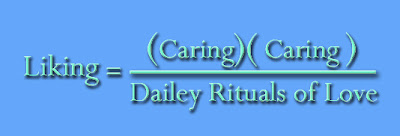The American Mathematical Society Show Is Up And Running
View the show here
The AMS show is now visible in it physical construction in Exibit Hall B at the San Diego Convention Center. The good news is that you don’t have to be in San Diego to view it you can go to the link here. The bad news is that the internet destroys some of the subtleties in the images. For example, the image by Andy Lomas (above) has beautiful delicateness that cannot be imagined here on the internet.
Andy’s image is composed of layered trajectories followed by millions of particles. Each individual trajectory is essentially an independent random process, with the trail terminating when it reaches a deposition zone. Collectively the paths combine to form delicate complex shapes of filigree and shadow in the areas of negative space that the paths don't reach. Over time, as particles deposit they create a growing region that future particles will not be able to enter. There are no actual defined boundaries, simply intricately structured gradients of tone formed by the end points of trajectories.
Andy Lomas, Digital Artist, London "These pieces are part of a study into how complex organic forms can be created from simple mathematical rules.
The base algorithms used to generate the forms are variations on Diffusion Limited Aggregation. Different structures are produced by introducing small biases and changes to the rules for particle motion and deposition. The growth like nature of the process, repeatedly aggregating on top of the currently deposited system, produces reinforcement of deviations caused by forces applied to the undeposited particles as they randomly move. This means that small biases to the rules and conditions for growth can produce great changes to the finally created form. All the software used to simulate the structures and render the final images was written by the artist in Visual C++."
-

The image above is of a three dimensional piece by Carlo Sequin in which he explores the geometrical relationships of a hole to a surface moving through a tube-like structure.
" Scherk's 2nd Minimal Surface" is a way to weave together two intersecting planes so that an infinitely long chain of holes and saddles replaces the intersection zone; it is possible to do that so that the resulting single surface has everywhere zero Gaussian curvature. The same basic scheme can be used to also blend together three planes that share a single intersection line. A small region, comprising just 5 monkey saddles and 4 Y-shaped holes, has been cut out of such a minimal surface; it has been artistically stretched and twisted to make a towering sculpture. Carlo H. Séquin, Professor of Computer Science, EECS Computer Science Division, University of California, Berkeley
Mathartist statement:
"My professional work in computer graphics and geometric design has also provided a bridge to the world of art. In 1994 I started to collaborate with Brent Collins, a wood sculptor, who has been creating abstract geometrical art since the early 1980s. Our teamwork has resulted in a program called "Sculpture Generator 1" which allows me to explore many more complex ideas inspired by Collins' work, and to design and execute such geometries with higher precision. Since 1994, I have constructed several computer-aided tools that allow me to explore and expand upon many great inspirations that I have received from several other artists. It also has resulted in many beautiful mathematical models that I have built for my classes at UC Berkeley, often using the latest computer-driven, layered-manufacturing machines. My profession and my hobby interests merge seamlessly when I explore ever new realms of 'Artistic Geometry'."

















































